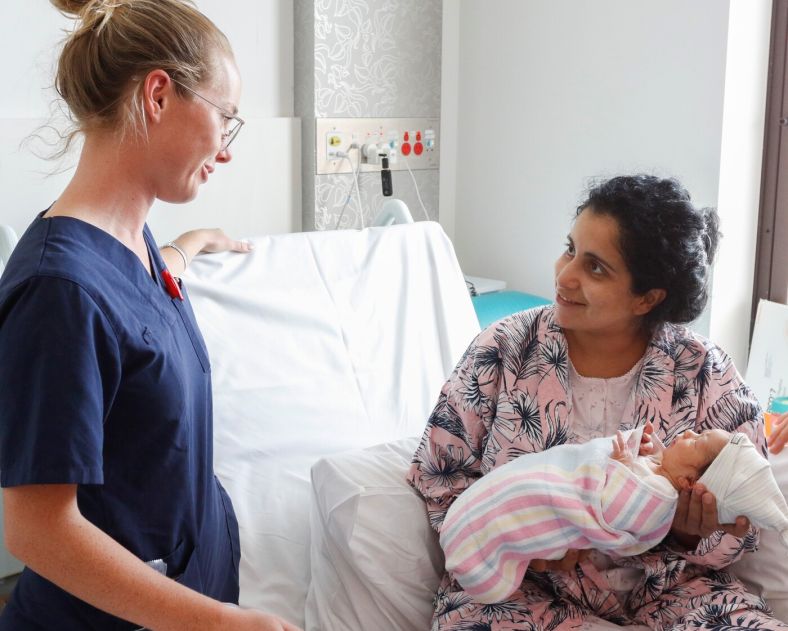Download or print
Request accessible format of this publication.
Good health is fundamental to women’s economic and social participation, but accessing quality and affordable health care can be challenging, especially for women from lower socio-economic backgrounds and those in regional and remote locations. The NSW Government will continue to invest in essential health services to ensure the people of New South Wales can access quality care in their community.
Research by the Grattan Institute indicates that women carry a higher health care cost burden and spend more out-of-pocket on health than men, with younger women in particular spending more compared to men their age. This is attributed to a number of factors, including maternal health care costs and higher rates of multiple chronic conditions for women.149
Cost can be a significant barrier to accessing health services. As NSW women on average are paid 11.8 per cent less than men, women face additional challenges in affording the cost of care.150 More women than men report cost as a reason for delaying or not getting prescription medication when needed.151 Women are also more likely than men to delay or not see general practitioners, specialists and dentists due to cost.152
A 2022 survey of over 14,000 women in Australia found that 44 per cent of respondents could not afford to see a doctor or other health professional when they needed to.153 This issue was more prevalent among women from non-English speaking backgrounds (70 per cent), women with disability (62 per cent), Aboriginal and Torres Strait Islander women (53 per cent), and LGBTI154 women (57 per cent).155
Access to general practitioners often requires a waiting period, particularly for people living in regional or rural areas.156 This can lead to delays in accessing prescription medication and treatments, and increased pressure on hospital emergency departments.
This Budget invests $7.3 million towards improving access to early treatment and prescription medications (if appropriate) by supporting participating pharmacists to provide treatment for uncomplicated UTIs and manage supply of the oral contraceptive pill. This measure will be particularly beneficial for women. Around one in two women will get a UTI in their lifetime, compared to one in 20 men.157
Women’s Health Centres play an important role in providing primary health care to women, supporting an average of 50,000 women of all ages each year in New South Wales. The centres have a focus on supporting disadvantaged groups in the community, including women from lower socio-economic backgrounds.158
The centres aim to blend medical and clinical services and a range of counselling, health promotion, education, self-help and consumer advocacy services for women who may have otherwise only received care and support via the tertiary emergency system.
Services are generally free, heavily discounted, donation-based or charged on a sliding scale.159 A survey of referrers to Women’s Health Centres found two-thirds of respondents reported that 75 per cent or more of their clients would be unable to access the services they require if the centres were not available.160
The NSW Government is committed to improving women’s health. This Budget invests $34.3 million to support 20 Women’s Health Centres to continue delivering a range of health and support services to NSW women.
Breast cancer is the most commonly diagnosed cancer for women in Australia.161 Approximately one in eight women in New South Wales will be diagnosed with breast cancer by the age of 85.162 While men can and do experience breast cancer it disproportionately affects women, representing 27.7 per cent of female cancer cases in New South Wales, compared to 0.2 per cent of male cases.163
Breast screening is recommended to detect breast cancer early, with women aged between 50 and 74 years encouraged to have a free screening mammogram every two years. A screening takes approximately 20 minutes and does not require a doctor’s referral.
The NSW Government is committed to supporting breast cancer patients, investing $18.6 million in this Budget for 29 new and eight existing McGrath Foundation breast care nurses. These nurses provide patients and their families with physical, emotional, and psychological support and coordinate care from the time of diagnosis and throughout treatment. Positions will be located across Greater Sydney and regional New South Wales, with the objective that every person experiencing breast cancer in the State can receive free care and support from a breast cancer nurse.
Funding for Women’s Health Centres, McGrath Foundation breastcare nurses, Sexual Assault Nurse Examiners and medical and forensic officers (see section 5.3) form part of the $100 million women’s health package.
Better reproductive and sexual health care is integral to improving women’s health outcomes. This care encompasses contraception, testing and treatment for sexually transmissible infections, cervical cancer screening, management of menstrual and gynaecological issues, and pregnancy planning and options counselling. It also includes safe access to abortion care, following the Abortion Law Reform Act 2019, which ensures abortion is treated as a health issue.
Reproductive and sexual health care mainly takes place in the primary care setting through general practitioners, non-government organisations and private providers, including family planning clinics and Aboriginal Medical Services. It can be difficult for women to locate reproductive and sexual health services, particularly in regional and rural areas of New South Wales. Access to abortion services is particularly challenging for women in regional and rural areas, with some having to travel long distances to access this service.164
Research suggests there is still unmet need for family planning in Australia.165 Access to safe and affordable contraception is critical to women’s health, as unintended pregnancies can result in poorer pregnancy outcomes than planned pregnancies.166
This Budget commits $3.5 million to improve women’s access to reproductive health services, including in regional New South Wales.

Request accessible format of this publication.